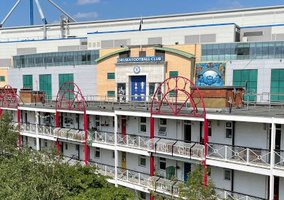Most community buildings in England do not meet basic energy efficiency standards, according to newly published research.
A report by Social Investment Business found that 7,375 of 13,171 community buildings in the country do not have a basic energy performance certificate (EPC) rating C, commonly suggested as the minimum required for sale or let by 2035.
Antonia Swinson, chief executive of the Ethical Property Foundation, said the long-term implication for charity tenants in such buildings may be that “energy bills in the end will bleed them dry” with many community centres having to close.
‘Plenty of examples of community centres having to close’
Swinson welcomed the report and said many charities were unable to make improvements because they rent properties from their local authority.
“The issue is that most community groups do not own their building so it is up to the landlord, usually the local council, to improve energy efficiency standards,” she said.
“Frankly, many council property departments do not see this as a priority.
“For the charity tenants, the long-term implication is energy bills in the end will bleed them dry, and my colleagues and I have seen plenty of examples of community centres having to close.
“Whom does that suit? Not the community which loses the amenity, but it does free up council assets to sell – particularly true in areas of high land values.
“There are however ways community centres can negotiate with a landlord – not least using local councillors to put pressure on the council officers and even going public if needed.
“If a community owns its property, then there is grant funding out there and plenty of help.
“Trustees just need to think long term and be aware how long pay back periods can be.”
More deprived areas worst affected
England’s most deprived neighbourhoods have community buildings that are less energy efficient and the north of England has fewer energy efficient community buildings than the south, the researchers found.
The report says that as deprivation increases, so too does energy inefficiency.
“As costs to renovate buildings are often large, more deprived areas are less likely to be able to absorb these costs at their own expense,” the report states.
“They may also be less likely to have newer buildings and rely on existing old building stock in the social sector.”
The report says many of these buildings are larger in size and located in more deprived areas which are often financially constrained.
“These structures predominantly serve community and charitable purposes and unlike their for-profit counterparts, they operate without substantial financial reserves,” it says.
Researchers noted the organisations that run these buildings often do not have the additional funding available for urgent renovations.
“These buildings are at the centre of local communities and improving their energy efficiency could ensure the future viability of these hubs.
“Investing in this transformation ensures that community-focused organisations can continue serving without being unduly burdened.
“If we want to meet our net zero ambitions, and we want to allow community groups to thrive, there must be additional work to address this discrepancy and improve energy efficiency in community facilities.”
Related Articles












